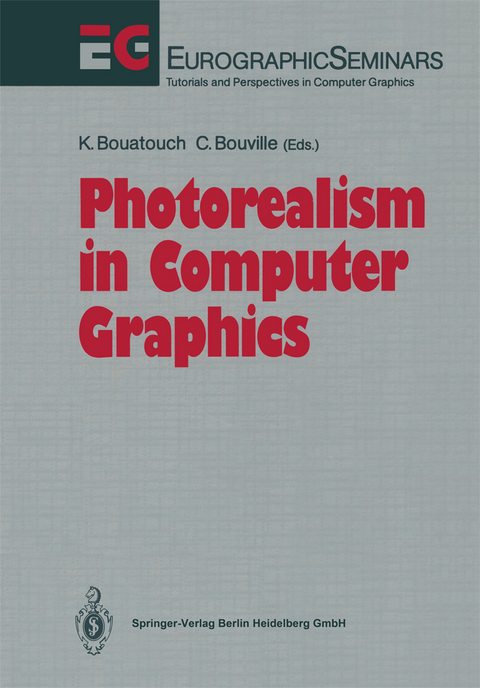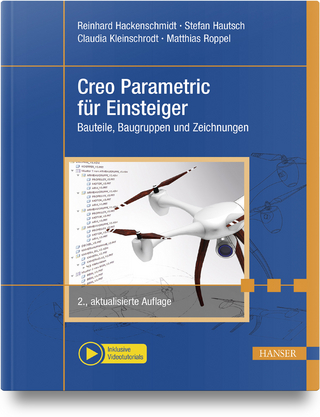Photorealism in Computer Graphics
Das Buch stellt die neuesten Forschungsergebnisse dar über die computergrafische Erzeugung fotorealistischer Bilder durch Simulation optisch-physikalischer Phänomene. Behandelt werden insbesondere Beleuchtungsmodelle (illumination models), Strahlungsverfahren (radiosity) und Strahlverfolgungsverfahren (ray tracing).
The goal of this book is to present the most advanced research works in realistic computer generated images. It is made up of the papers presented during a Eurographics workshop that has been held in Rennes (France) on June 1990. Although realism in computer graphics has existed for many years, we have considered that two research directions can now clearly be identified. One makes use of empirical methods to efficiently create images that look real. As opposed to this approach, the other orientation makes use of physics to produce images that are exact representations of the real world (at the expense of additional processing time), hence the term photosimulation which indeed was the subject of this book. The objectives of this workshop were to assemble experts from physics and computer graphics in order to contribute to the introduction of physics-based approaches in the field of computer generated images. The fact that this workshop was the first entirely devoted to this topic was a bet and fortunately it turned out that it was a success. The contents of this book is organized in five chapters: Efficient Ray Tracing Meth ods, Theory of Global Illumination Models, Photometric Algorithms, Form-Factor Cal culations and Physics-Based Methods.
Invited Paper.- Trends in Radiosity for Image Synthesis.- 1. Efficient Ray Tracing Methods.- Incremental Ray Tracing.- Parametric Surfaces and Ray Tracing.- 2. Theory of Global Illumination Models.- A Theoretical Analysis of Global Illumination Models.- Physically Based Lighting Calculations for Computer Graphics: A Modern Perspective.- Efficient Radiosity Methods for Non-Separable Reflectance Models.- 3. Photometric Algorithms.- A Progressive Ray-Tracing-based Radiosity with General Reflectance Functions.- A Two-Pass Radiosity Method for Bézier Patches.- 4. Form Factor Calculation.- The Hemisphere Radiosity Method: A Tale of Two Algorithms.- Exploiting Coherence for Clipping and View Transformations in Radiosity Algorithms.- A Rapid Hierarchical Radiosity Algorithm for Unoccluded Environments.- Fast Radiosity by Parallelization.- 5. Physics Based Methods.- Newton's Colors: Simulating Interference Phenomena in Realistic Image Synthesis.- Light Sources in a Ray Tracing Environment.- Methods for Efficient Sampling of Arbitrarily Distributed Volume Densities.
| Erscheint lt. Verlag | 10.2.1992 |
|---|---|
| Reihe/Serie | Focus on Computer Graphics |
| Zusatzinfo | XVI, 232 p. 55 illus., 25 illus. in color. |
| Verlagsort | Berlin |
| Sprache | englisch |
| Maße | 155 x 235 mm |
| Gewicht | 514 g |
| Themenwelt | Mathematik / Informatik ► Informatik ► Software Entwicklung |
| Mathematik / Informatik ► Informatik ► Theorie / Studium | |
| Informatik ► Weitere Themen ► CAD-Programme | |
| Schlagworte | algorithms • Beleuchtung • Clipping • Computergrafik • Computer Graphics • Computergraphik • Development • Farbe • Fotorealismus • Illumination models • Radiosity • Ray tracing • Realistic imagery • Rendering • Simulation • Strahlungsverfahren • Strahlverfolgungsverfahren |
| ISBN-13 | 9783540542650 / 9783540542650 |
| Zustand | Neuware |
| Informationen gemäß Produktsicherheitsverordnung (GPSR) | |
| Haben Sie eine Frage zum Produkt? |
aus dem Bereich




